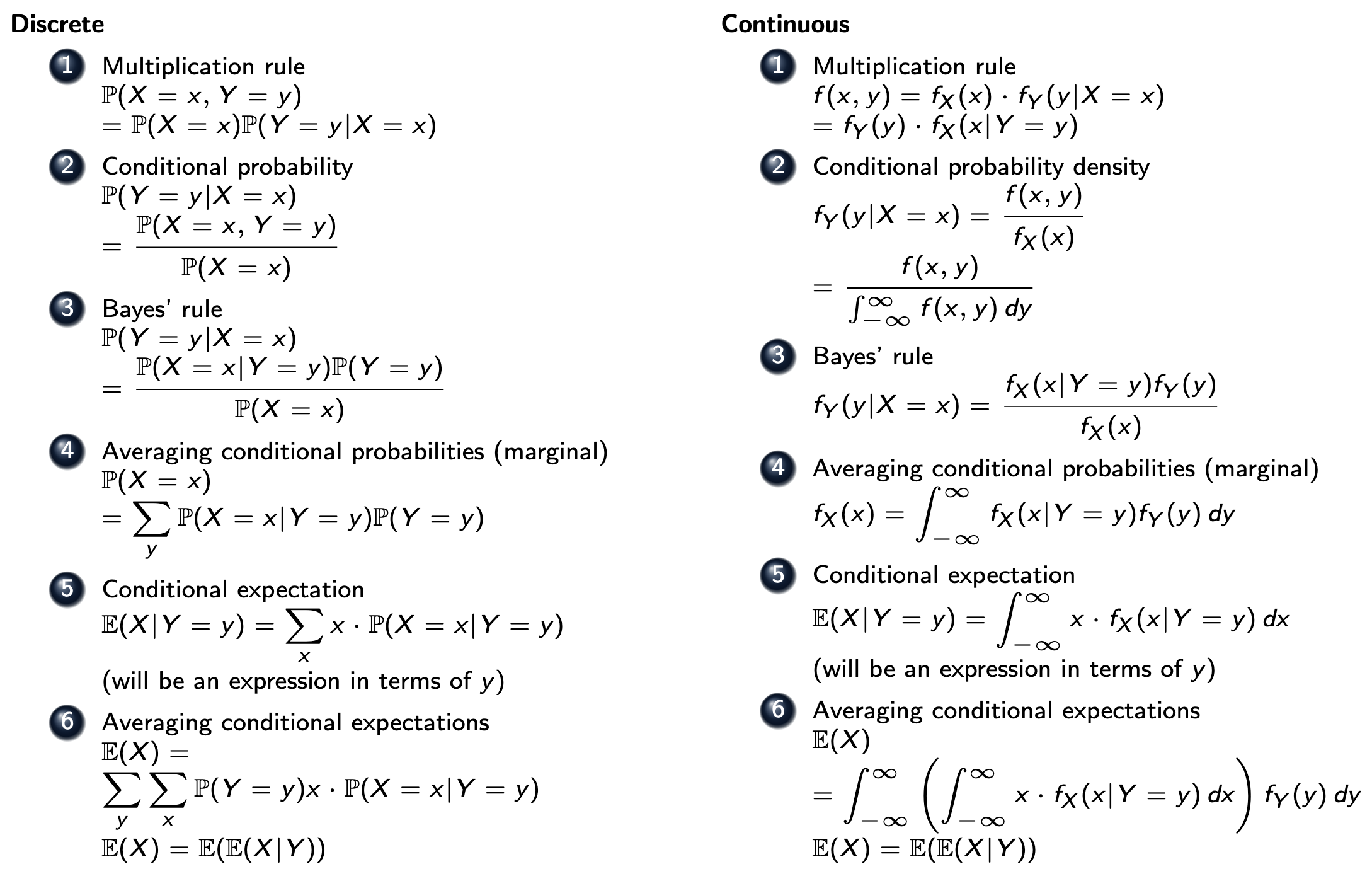Expected Value
def. Expected Value. For random variable with countably many outcomes, its expected value is defined as:
Properties. The following identities hold for expected values, with constant , random variables .
- Linearity
-
- If then (reverse does not hold)
- let be a function over . Then, (Law of Unconscious Statistician)
- !
thm. Tail Sum Formula. when is a non-negative discrete random variable:
Remark. The Tail Sum formula is useful when the random variable is defined as the minimum or maximum of a certain set of events (e.g. minimum of multiple dice rolls, etc.)
Expectation Manipulation from class:

Conditional Expected Value
def. Conditional Expectation. let be jointly distributed. Then the conditional expected value is defined…
- …over an event:
- …over an event on a random variable
- …over a random variable:
- ! While expectation conditioned on an event is a value, an expectation conditioned over a random variable is another random variable
- Intuition. Think of it as “given all information by , what’s the new random variable?”
- linearity
- where is a partition of .weighted summation thm. Conditional Joint Expectation. and . Then:
thm. Calculating Expected Value from Conditional Expected Value. (Identity 2 above) let be jointly distributed. Then the expected value of is calculated:
- Useful for computing when depends on .
- Works regardless of whether are random or discrete, and when mixed.
…for Stochastic Calculus
Intuition. Conditioning is done only by two objects: a sigma algebra, or an event. Each are defined:
In both cases, it’s useful to think of as the best guess.
\mathbb{E}[X|Y]on an RV, it's shorthand for\mathbb{E}[X|\sigma(Y)].
def. Measurability. R.V. is -measurable iff:
Intuition. Looking at the above definition, it simply means also takes the same value for each atom of as .
thm. For any R.V. and filtration , , which is a random variable, is -measurable.
def. Independence. R.V. is independent from -alg iff:
i.e. giving the information on has made zero difference Properties.
- If is independent of then Taking out independent factors.
- if is -measurable, Taking out what’s known
- e.g.
- Tower Property: